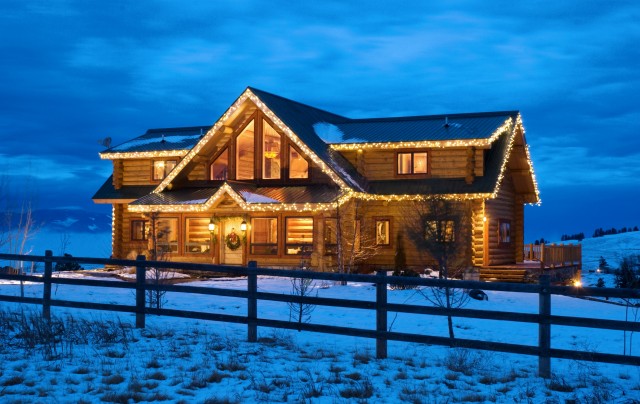
Invest in your future
Log Cabin Efficiency Meets or Exceeds Many of Todays Green Building Standards
There is a lot of talk these days about “green building” practices. For years the log home industry and we at Montana Log Homes have been constructing homes that meet or exceed many of the standards that are being developed today.
Montana Log Homes uses the most sustainable building material on the planet: Wood. Not just any wood, but dead and dying trees that when properly harvested contribute to a healthier forest. Since these trees have air dried naturally, no additional kiln drying is required. With responsible logging practices, a sustainable supply of logs will be assured for generations to come.
READ LOG HOME LIVING’S ARTICLE ABOUT ENERGY EFFICIENT CABINS
Those who already live in properly constructed and sealed log homes have always known that their energy bills are considerably less than their neighbors residing in conventionally framed houses. The reason for this is that the natural cell structure of dry logs is one of nature’s best insulators. While consumers are used to comparing “R” values (a measure of a material’s resistance to heat flow over the thickness of the material) few are as familiar with a building’s “U” factor. Engineers calculate U-factors based on the home’s overall thermal effectiveness, which among other things, takes into account the walls “thermal mass”. Thermal mass, in simple terms, is a wall systems ability to store the heat of the day and release it back into the room during the cold night or store the cool night air of summer and release it back on those hot summer days. This ability greatly reduces the need for mechanically enhanced heating and cooling systems. Since typical frame walls have little to no thermal mass, they may boast a good “R” value, but the “U” factor can be surprisingly low. Conversely, a log wall may not have the highest “R” value but its “U” factor is amazingly high. It is no surprise that properly constructed log homes have been known to out perform conventional frame houses by as much as 20-40%!
Have you ever noticed any of the old pioneers cabins scattered across the United States? Many of these homesteads were constructed in the late 1800’s and early 1900’s. They were built on stone foundations or no foundation at all. Roof beams were whatever size was available or whatever size they could physically put into place. No preservatives were available to protect the logs, and yet 100 or more years later they are still standing. Imagine a log home today, properly engineered and placed on a solid foundation with modern roofing materials and quality, environmentally friendly finishes. How many generations, do you think, will be enjoying life in these modern “log cabins”? Is this not the ultimate in green building, producing homes that are built to last centuries, that are energy efficient, that use renewable resources and as an added bonus, are beautiful to look at and are comfortable to live in. And if for some reason, in the years to come, future generations choose to replace a log home, the odds are pretty good that the materials used for its construction will be recycled into lumber, or as is common practice even today, the logs will simply be used again in a new structure.
Log cabin efficiency is tough to beat. Your Montana log home will truly be a sound investment. With proper planning, the right team of builders and your commitment to build the best quality log home, you will be on your way to enjoying the comfort of living in a beautiful, efficient and environmentally friendly home.


